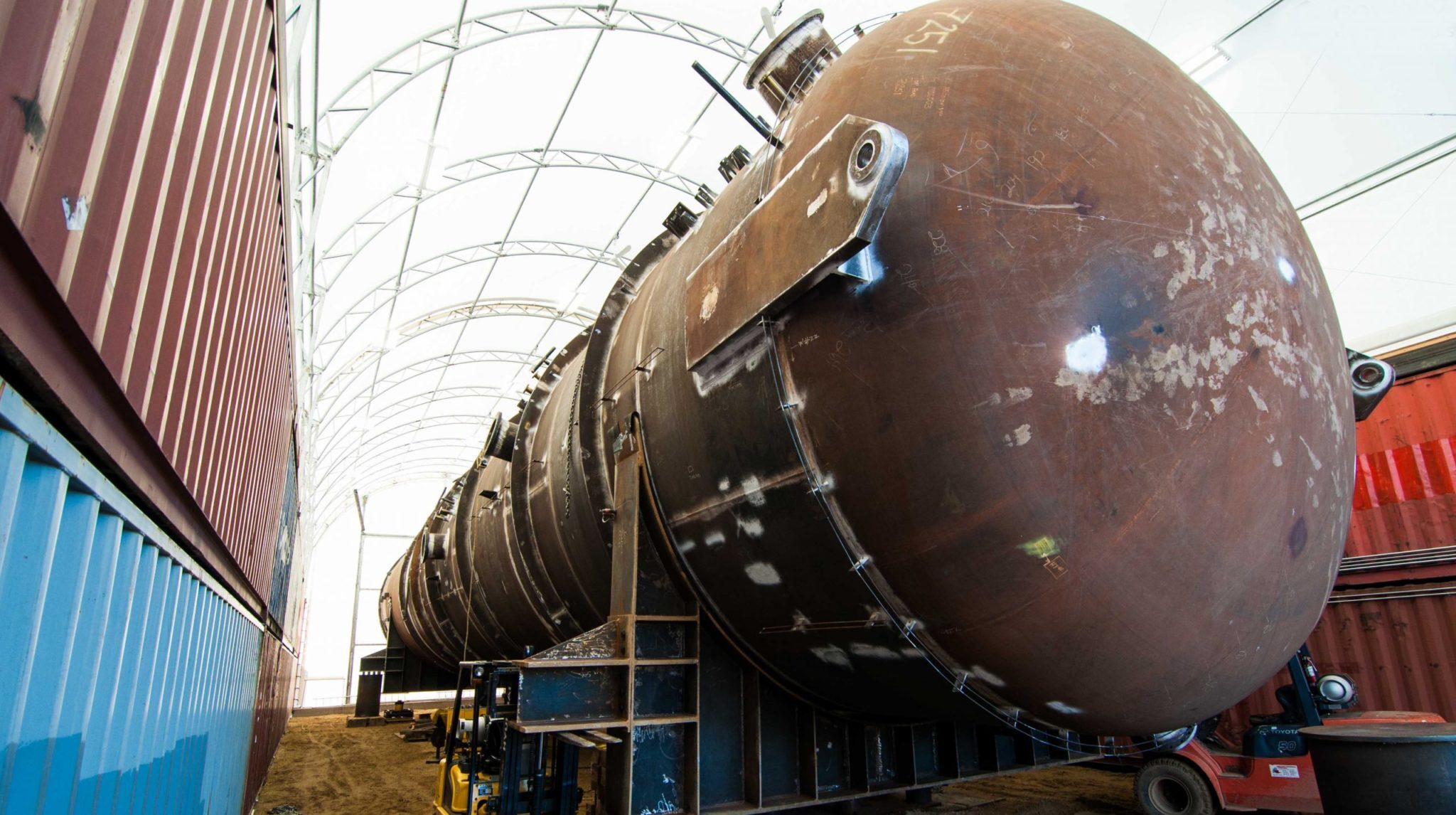Industrial Storage & Warehousing: Essential Fabric Structure Features for Your Warehousing Needs
by Admin | Aug 23, 2018

Industrial storage and warehousing solutions should be versatile, cost-effective, safe, strong, and durable. The industrial storage building should have the properties required to protect their contents, including industrial chemicals, fertilizers, raw materials, and mechanical/electrical equipment, from water or fire destruction. Engineered fabric structures possess unique qualities and distinct attributes that make them suitable for a wide range of warehousing applications and industrial storage needs.
1. Corrosion-Protected Hot-Dip Galvanized (HDG) Steel Frames
The steel framework that supports an industrial storage building are hot-dip galvanized for corrosion protection. The HDG process involves dipping the metal into a tank with molten zinc. A metallurgical reaction between molten zinc and the iron in the steel produces an alloy film that bonds tightly with the frame. HDG steel is 30 times more corrosion-resistant than pure steel, and it can serve its purpose for decades, primarily when used to set up a fabric structure for storage. The framework is worth the investment in the long run as it won’t rust or wear down or rust on exposure to moisture, snow, and water.
An engineered fabric structure for storing corrosive chemicals such as fertilizer, salt, or swine manure, may come with an extra protective coating. For example, an HDG steel frame with a rubberized top coat does not deteriorate on accidental contact with corrosive substances. Coating foundations and base plates with the rubberized formula also prevents moisture from destroying the structure at the ground level.
2. Hard-Wearing HDPE or PVC MembraneA sturdy fabric tarp is ideal for any warehouse located in a harsh environment. As such, some of the strongest engineered industrial storage building structure features a high-density polyethylene (HPDE) cover that does not come apart on exposure to rain, soil, or snow. In particular, a 12-oz HPDE fabric retains its tensile strength for longer, repeated exposure to strong winds. With tensile strength of above 1,000 psi, the material guarantees long service life. Another factor that contributes to the longevity of the fabric cover is its flexible rubber construction. As such, the material moves without losing its mechanical properties as the steel frame contracts and expands with temperature fluctuations. This is made possible through 3D Nonlinear Finite Element Analysis (FEA) – a specialized analysis which models the shape of fabric under load. By accurately determining various environmental loads that are applied to your fabric structure, 3D Nonlinear FEA validates the strength of your fabric building.
3. UV Protection
When it comes to industrial storage building, engineered fabric covers are the first line of protection against photodegradation. Usually, the sun’s ultraviolet (UV) rays can cause the breakdown of the bonds holding a polymer together, resulting in the quick deterioration of the material’s mechanical properties. A UV-protected PVC or HPDE fabric does not undergo such degradation.
UV protection also helps preserve the condition and stability of the contents of a warehouse. The safeguard is necessary for buildings storing substances that become unstable on exposure to UV radiation. In some cases, sunrays may trigger violent chemical reactions in a store. Similarly, a UV-stabilized fabric protects plastic containers inside a warehouse from becoming brittle and prone to breaking.
High-quality PVC or HPDE fabric covers for engineered fabric structures usually meet the ISO 4892 part 1 or ASTM G-151 test requirements. In a typical industrial storage application, a rubber membrane may fit the bill if it retains 90% or more tensile strength upon exposure to artificial UV for 2000 straight hours.
4. Fire Safety
Any material for constructing an industrial storage building solution should be highly fire-retardant to protect the structure, the people working in it, and the valuable assets inside it. With fabric structures, the cover has a low Flame Spread Index (25 or less) in compliance with industry standards and building codes.
If an engineered fabric cover has a low FSI rating, it:
• Boasts self-extinguishing qualities
• Minimizes flame spread internally and to adjacent structures
• Prevents the total fire destruction of an engineered fabric warehouse
• Gives personnel ample time to escape in the event of an inferno
5. Great Working Conditions
A translucent fabric warehouse cover provides ideal working conditions by allowing up to 80% of the sunlight to illuminate the building. It makes it easier for personnel working in a store to organize and move items, from pallets and oil drums to bags of fertilizer and stacks of raw materials. As an additional benefit, plenty of natural light during the day helps cut industrial storage costs associated with artificial lighting.
6. Custom Industrial Storage Design
Engineered fabric structures are easy and quick to customize with add-on’s and additional components depending on the user’s storage needs. For example, a customer storing piles of manure or contaminated soil may order a well-ventilated, clear-span, and eco-friendly facility for bulk storage. Such a structure could also feature a breathable fabric cover to prevent the inhalation of potentially harmful bioaerosols.
Industrial storage and warehousing poses unique challenges that only engineered fabric structures can address satisfactorily. The location of such storage facilities usually presents numerous environmental and weather concerns, including rain, snow, high/low temperatures, and chemicals. As such, appropriate fabric buildings for industrial storage boast high tensile strength, safe working conditions, UV protection, fire-retardant properties, proper ventilation, and corrosion-resistance.


